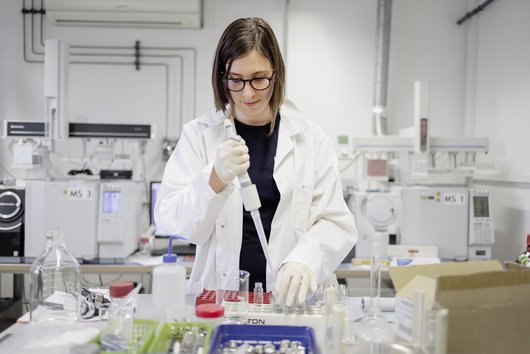

The Construction Site of the Future
In 30 years, many people (including me) will be close to or already enjoying their retirement. In order for building to be implemented in accordance with future requirements and for the next generations to be prepared for all challenges, some changes are still needed. And we need to get started on making those changes now. In 2050, we will no longer be able to afford energy- and resource-intensive construction practices. Scarcity of raw materials, delivery bottlenecks, prioritization of health, higher energy standards, and expensive global transport logistics will lead to new legal frameworks for construction. Green spaces will be rare, and new building sites will hardly ever be approved because preserving farmland will be vital. In future, the focus must therefore be on revitalisation, renovation, and refurbishment. All while consuming as little energy as possible.
Future technologies
It is already clear to us that establishing new machines only succeeds when we involve the users. New technologies need people who want to and are able to use them. This can only be achieved if those machines bring a benefit – that is, if they make everyday life easier. With cooperation between the operating units, innovation drivers, and inventors, PORR will be able to uphold its status as an innovative construction company even in 2050. Excavators, cranes, and other construction machines will be tested in simulators before construction begins to determine whether they can be used appropriately. Apprentices will also be trained in basic programming. And our construction site teams will work with collaborative robots on a daily basis.
These “cobots” will be deployed on all our construction sites in 2050 and provide useful support to human workers. Construction containers will include a technical centre that will evaluate image information and collected data and make it available to the construction site team. In addition to new technologies, we will also see the introduction of new working methods that will enable better collaboration. Through training and further education, all PORRians will be able to use the latest technology. Involving operational units in the latest developments will be the key to success.


Future processes
The dismantling and recycling of existing materials will shape our industry in 2050. Today’s construction methods – bonded insulation, flamed seals, and reinforced concrete – do not provide a good basis for reusing materials by type. It takes a great deal of time and energy to process substances into separate materials. The future will require new connections and constructions that take recycling into account before installation. All players in the construction industry have recognised the need to focus on the circular economy and on processes for handling and recycling existing materials. PORR started this new trend early on by investing in recycling systems and automated dismantling processes for the efficient recovery of resources and raw materials. By 2050, we will also see the implementation of many urban mining applications, such as the reclamation and reuse of plasterboard. Today’s challenges, which involve obtaining the required certifications and appropriate warranty requirements for reused materials, will be gradually being addressed through adapted laws and framework conditions.
Future jobs
In my opinion, the most significant change in the coming years will be in hazardous working environments. The goal of removing people from hazardous working environments will have been achieved by 2050. Robots and cobots have started their triumphant advance in the dismantling of radioactive material. They are becoming easier to use. Demolition work and pollution remediation will be carried out on site almost exclusively by robots or machines that are remotely controlled by people. Construction sites will also be fully equipped with imaging technology. People will be able to control and check the machines and robots from a safe distance, even from their home office. Workers will not be replaced, but instead, hazardous working conditions will be mitigated. In 2050, jobs will be more secure and will have changed permanently.
The construction site of 2050 will also be shaped by methods and processes that will fundamentally change how everyone works. Clients and project participants in all phases will always work shoulder to shoulder rand no longer side by side. This will be achieved with integrated contract models. There should then no longer be a start of construction before the planning process is completed. LEAN and BIM will have long since become a matter of course. Automation and digitalisation will ensure time-efficient work in 2050. Activities that do not add value will be replaced by digital processes. The time gained will be used for optimisation and innovation. This will enable shorter, even more flexible working time models and a better work-life balance. In addition to technical knowledge, empathy, communication, and networking will be the skills of the future. All of this will also mean that more and more women will become interested in a career in our industry.


Remote control and programming of machines will also create new career prospects, especially for people who speak foreign languages and who have an affinity for computers, because programming languages can mostly be implemented independently of the relevant local language. And using machines via a multi-screen control booth will be similar to classic video gaming in 2022.
The future begins now
New technologies bring new opportunities. Our task in the coming years is to make optimal use of them. This also means learning new things, applying them to our everyday lives and working smarter. For the construction site of 2050 to become a reality, we must approach future success with a pioneering spirit.

![(c) PORR / pde [Translate to Englisch:]](/fileadmin/_processed_/9/1/csm_JKAT_HKLS_Fotomontage_73900c74bd.jpg)
![[Translate to Englisch:] (c) PORR [Translate to Englisch:] (c) PORR](/fileadmin/_processed_/3/3/csm_5V5A3742_4c8554371e.jpg)